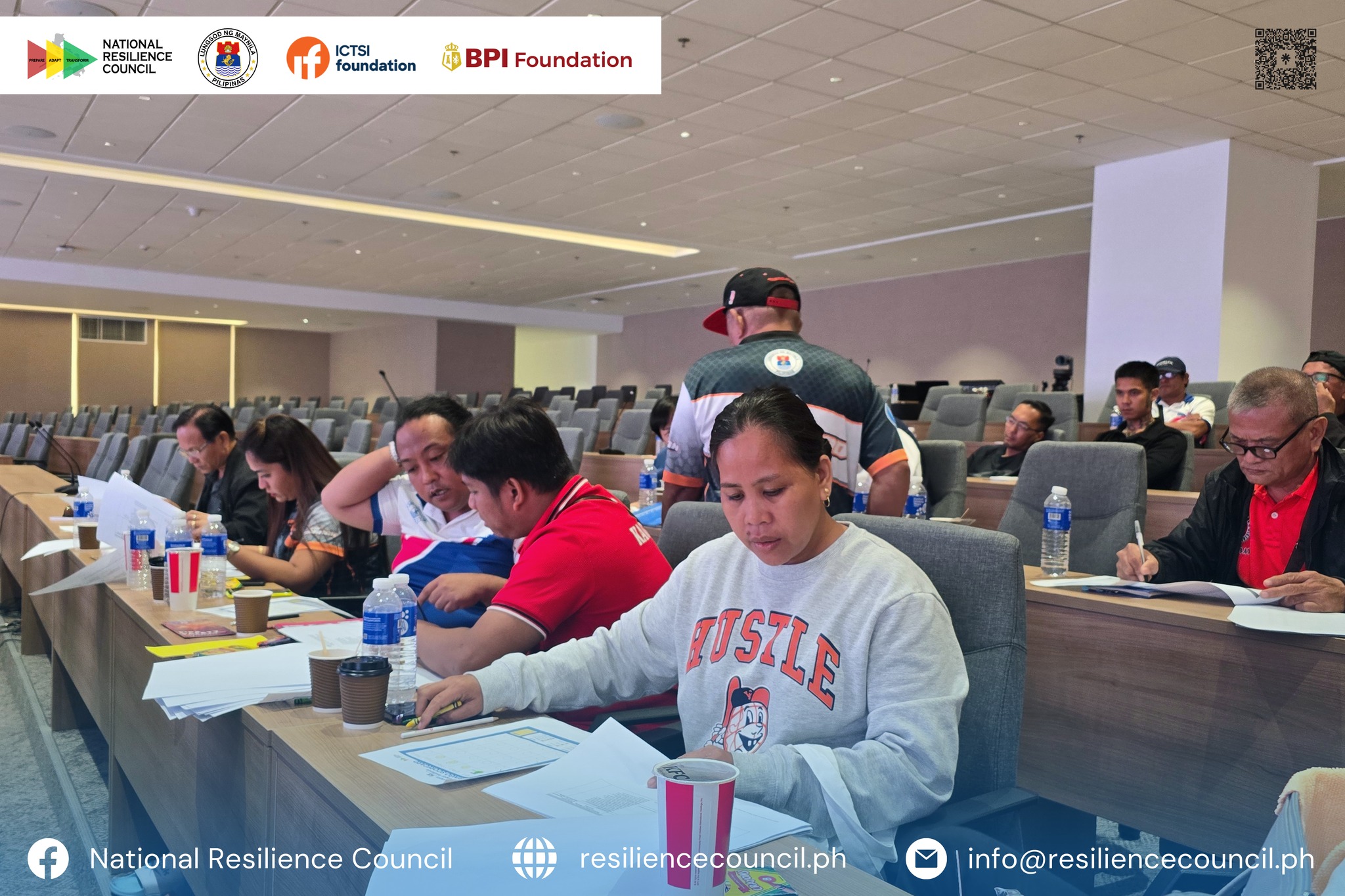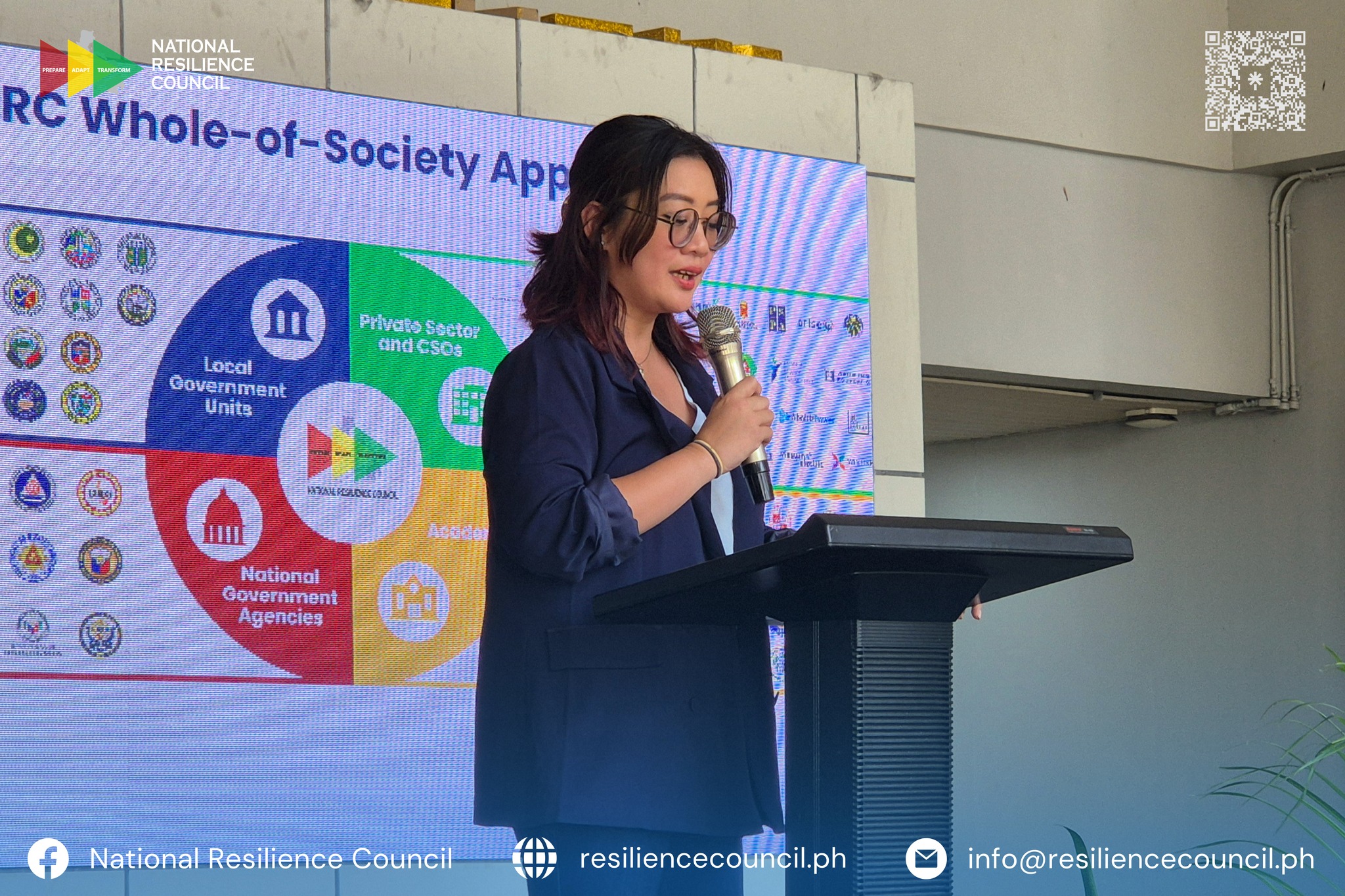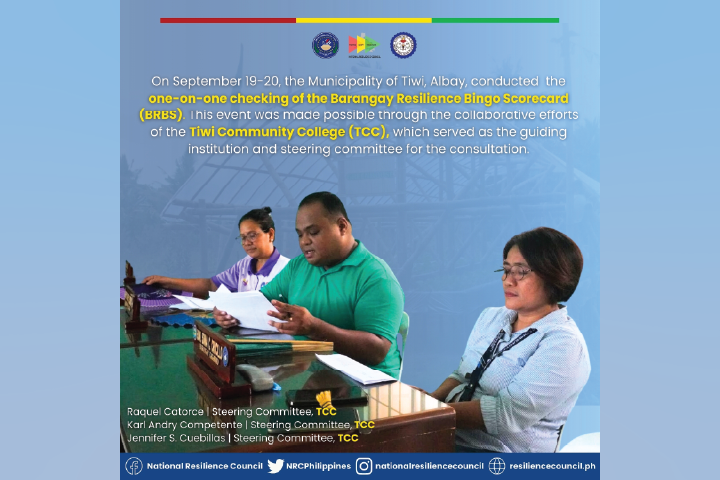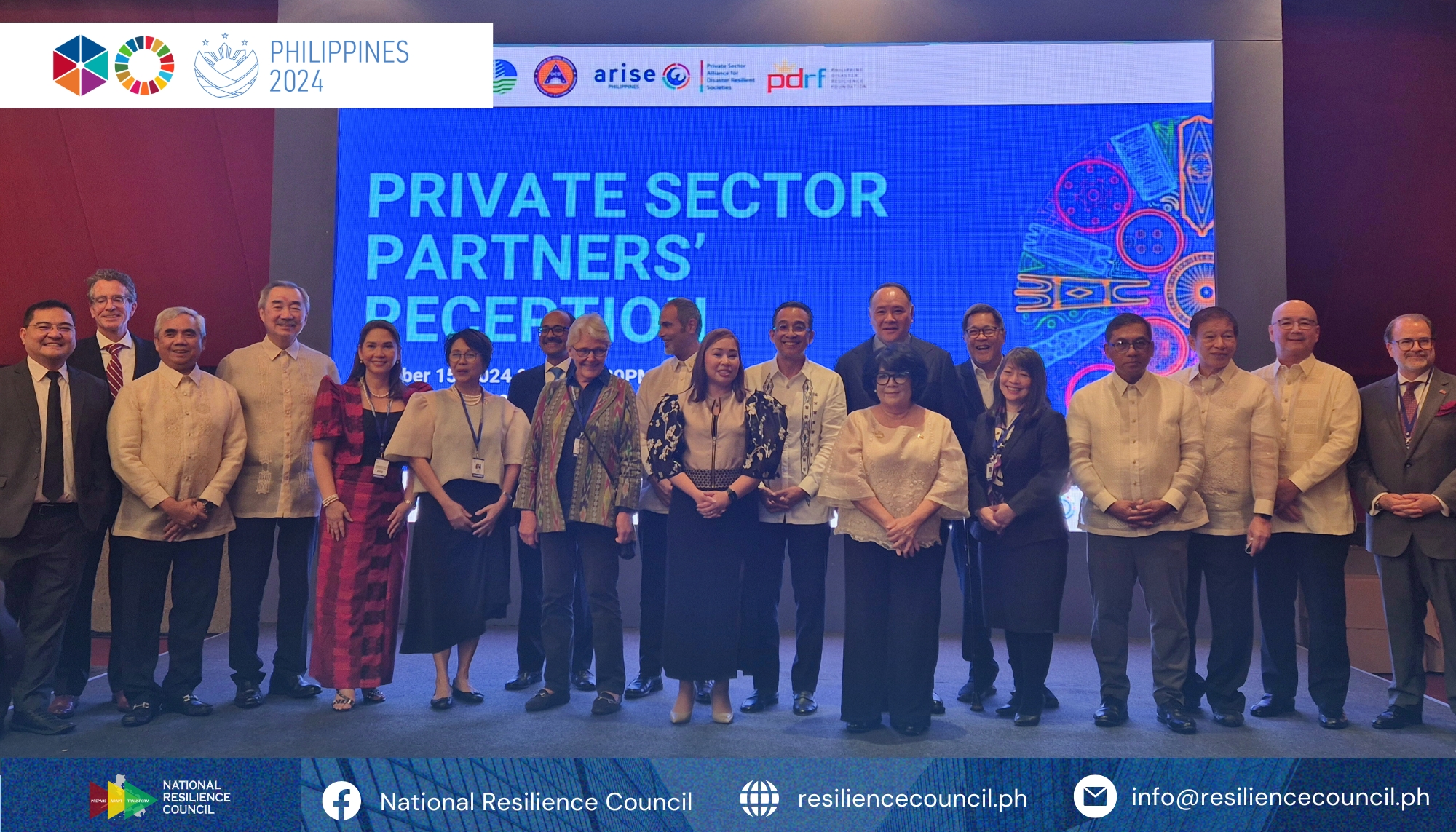Category: Blog
-

BRBS Manila
The NRC, along with the Manila Disaster Risk Reduction Management Office (MDRRMO), ICTSI Foundation, and BPI Foundation, officially launched the Barangay Resilience BINGO Scorecard (BRBS) in 19 barangays in Manila. During the launch, NRC Resilience Analyst, Ms. Maria Theresa Joy Rocamora, highlighted the importance of using scientific methods in understanding and assessing risks and existing…
-

Congratulatory Post for 2024 PRA Awardees
The National Resilience Council (NRC) would like to congratulate the recipients of the 2024 Philippine Resilience Awards for their outstanding contribution in the field of climate and disaster resilience. Your unwavering commitment to champion resilience is truly a remarkable act of service for the environment and our people in building a #ResilientPhilippines. We would also…
-

2024 International Training Workshop on Smart Technology and Earthquake Risk Management
The National Resilience Council (NRC) participated in the 2024 International Training Workshop on Smart Technology and Earthquake Risk Management, held in Taipei, Taiwan, from October 28 to November 2, 2024. Hosted by the National Science and Technology Center (NCDR), the event welcomed the Philippines’ delegation, which included representatives from the Department of Science and Technology…
-

TAMTALKS: Volunteerism Week 2024
LOOK: The National Resilience Council shares its resilience work and innovations to the youth of FEU Institute of Technology during the university’s TAMTALKS: Volunteerism Week 2024 hosted by FEU Institute of Technology – NSTP Department in their campus last November 20, 2024. The event served as an opportunity for learning exchange and encouragement of further…
-

Revisitation, Baselining, and Barangay Visitation
The Tiwi Resilience Council, composed of faculty members from Tiwi Community College (TCC), with the support of the National Resilience Council (NRC), successfully piloted the Barangay Resilience Bingo Scorecard (BRBS) on September 19-20, 2024. This innovative initiative aims to empower communities, enhancing their ability to withstand climate and disaster risks. Three barangays in Tiwi –…
-

APMCDRR Resilience Hubs Speakers
ICYMI: The National Resilience Council (NRC) proudly organized the “Resilience Hubs for Anticipatory Action: Amplifying the Role of Science and Technology Innovations through Public-Private-People Partnerships” last October 15, 2024, at the Philippine Pavilion Partner Event. The session featured NRC’s Adopt-A-City (AAC) Initiative, highlighting the importance of resilience hubs and anticipatory technologies in building local resilience.…
-

APMCDRR Speaking Management
The APMCDRR2024 Partner Event titled, “From Science to Action: Transforming the Local Governance landscape in the Philippines,” highlighted the role of Project TRANSFORM in fostering a whole-of-society approach in disaster risk reduction (DRR) through science and technology (S&T) and local and traditional knowledge in informing policy and practice. This objective was further substantiated by esteemed…
-

Private Sector Reception
The National Resilience Council celebrates its forged partnerships with key stakeholders and leaders from private sector groups, civil society organizations, academe, national and local government sectors that participated in ARISE PH’s function aimed at strengthening a multistakeholder approach in attaining the targets and goals of the Sendai Framework for Disaster Risk Reduction 2015–2030. #BridgingLeadership #ScienceToPractice…
-

APMCDRR Speaking Management
The plenary session for the “Localization and Urban and Rural Resilience” featured insights from experts on the importance of collaboration among and inclusion of different sectors in society, including local communities and vulnerable groups, in the implementation of disaster risk reduction (DRR) efforts toward climate and disaster resilience. The discussion underlined the critical need of…